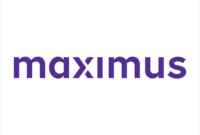Hubbard Radio Washington DC, LLC. All rights reserved. This website is not intended for users located within the European Economic Area.
On Air: Federal News Network

Building purposeful CX: The importance of a holistic approach to improving customer outcomes
On Demand
How can you be sure you're employing the right technology and services to achieve exceptional CX?
For many federal agencies, improving customer experience goes hand in hand with modernizing business processes and the systems that support them. A focus on improving the individual channels of interaction – in person, email, physical mail, chat and digital self-service – should now advance to greater integration of the channels. That’s the sentiment from a panel of federal and industry CX practitioners Federal News Network convened to get a view of CX trends.
“I think it’s really important, as we think about how we deliver customer experiences, to pull all of that together,” said MaryAnn Monroe, the vice president for total experience solutions at Maximus. “And I see more and more agencies doing that.” To keep CX optimized, agencies also need a single view of activity across the “omnichannel” program that constituents interact with, Monroe added.
Agencies aren’t brand new to CX thinking. New analytic and artificial intelligence tools and the integrative capabilities of commercial cloud computing, though, mean they must rethink how they deliver services. The 2021 White House Executive Order 14058 made many demands on agencies, and it updated EOs about service delivery dating back to 1993.
Deep CX roots
The IRS is a case in point. Courtney Kay-Decker, the deputy chief taxpayer experience officer, said the IRS has had a customer orientation since establishment of the taxpayers’ bill of rights some 20 years ago. Congress enacted the Taxpayer First Act in 2019. Established during the pandemic, Kay-Decker’s office has a strategic plan. She said it includes a long list of CX projects that fall into three basic buckets.
“Number one, you should be able to get to us how you want to, when you want to and get something resolved quickly, without a whole bunch of rigmarole,” Kay-Decker said. The IRS, she said, wants that outcome for all of its channels. “It’s the phones, it’s our chat bots, it’s improvements to our website, our paperless processes – all of those sorts of things.”
The other two buckets include fairness and compliance, and protection of taxpayers from scams and hackers as the agency becomes ever more digital.
The CX challenge for the Transportation Security Administration – like the IRS a designated high-impact service provider – lies in keeping impatient travelers from undue wait times while ensuring no prohibited items make it onto airliners. This, at a time when the agency screens two million people every day.
“We have to think of ourselves as public servants,” said Niki French, customer service branch manager at TSA. “Security is our mission. But there’s no reason that we can’t be professional and respectful as we’re delivering those services.”
The detailed customer experience work takes place at the program or bureau level, but department-level CX efforts have also sprung up.
For example, the Homeland Security Department established a directorate for CX. It “exists to support people like Nikki and her peers in CBP, FEMA, USCIS, Secret Service, Coast Guard, CISA and ICE,” said Director Dana Chisnell. All the components pursue CX in their own ways, she said, “and so we want to make sure that everybody at DHS can do more of it, that they can do it better, that they can learn from it, and that they are rewarded for doing it.”
Chisnell said the Office of Management and Budget in 2022 estimated that collectively, Homeland Security components put 190 million hours of burden on the public with forms and data collections.
“We ran an experiment in ’22 and ’23 to reduce that burden by 20 million hours…and delivered 21.4 million hours eliminated,” she said. “So this is super exciting.”
Chisnell said that DHS CX work often starts with “people who are furthest out on the margins, people who have been systemically and historically ignored or disadvantaged in some way.” Process planners “work with them first [to] understand their needs, their connectivity, their level of technology, their experience with the government.” She said that among the billion “person touch points” DHS has each year, “people are often coming to us on what might be the worst day in their lives.”
Analog and digital
Mia Jordan, digital transformation executive at Salesforce, emphasized the journey towards integrating CX into a seamless, omni-channel experience, as stated in the executive order.
“Being able to do that in a single platform is really important for our customers,” Jordan said. “The kind of disjointed and interrupted experience a lot of customers have with government is one of the drivers why simple, seamless and secure is explicit in the executive order.”
Much public interaction by government has become digital. Yet, for a variety of reasons, a certain level of “analog” interaction will always exist, panelists noted. For the IRS, a persistent minority of taxpayers will file with paper returns, a process that requires an outsized level of employee effort. For TSA, French said, the non-digital often takes the form of agents trying to verify people with Pre-Check status for expedited screening, when it doesn’t appear on their boarding passes.
“There’s an entire triage that we have,” French said. “It used to be on paper. And that is a terrible experience for agents.” TSA eased the paper burden on busy airport screening officers by consolidating data sources into a cloud platform on Salesforce. It makes for speedier answers when officers reach TSA call centers.
The IRS has instituted measures such as a document upload tool which, Kay-Decker said, “means any piece of paper that comes into the door is going to be imaged to get it more quickly into the system.” That will speed things for both employees and for the 20% of taxpayers while file manually.
“The systems will take care of lots of the hard stuff up front,” Kay-Decker said. “Ideally, we communicate in a way that helps the taxpayers when they’re filling out their forms, whether it is on a mobile device, whether it is through software, or pencil and paper.”
Her observation points to an important element in CX: improving employee experience.
“We often think of the citizen as a part of the customer experience,” said Jordan. “But the agent experience or the employee experience behind the service or benefit that’s being delivered, is an area where I’m now starting to really see a lot more focus and intention around.”
What’s ahead on CX
While the IRS has restored reasonable service on its call centers, the agency isn’t stopping its CX improvement drive, Kay-Decker said. Agency staff are at work on what she called a taxpayer 360 view so “our customer service representatives can see on a screen everything they need to know about that taxpayer who’s calling in.” She said the effort would result in a game changer for agents’ ability to solve taxpayers’ problems.
DHS’s Chisnell emphasized the need to keep improving the technology support for people on the customer experience front lines. She cited the researcher and user interface designer Jared Spool and the idea of “tool time” versus “gold time.”
Agency CX teams must think both outside-in and inside looking out, “making sure that mission critical systems and technology are designed and built in a way that everybody who’s using them can focus on their goals, on their missions, rather than on the tool,” Chisnell said.
She added that on the user side, the percentage of visitors using mobile devices continues to rise. It stands at more then 50%. Chisnell said simply using federal web design standards will help ensure more-usable and functional mobile interfaces.
The IRS takes a step-by-step to mobile applications, Kay-Decker said, starting with the most popular ones.
“Where’s My Refund” works seamlessly on a mobile device,” she said.
As in so many technology fronts, customer experience will get a boost from artificial intelligence, panelists agreed. In fact, said Maximus’s Monroe, it already is.
“We are using AI, and have been for several years, in our digital channels and contact centers,” she said. The company operates them for the Veterans Affairs and Education Departments. In one instance, she said spoken words “bring up knowledge articles that help customer service representatives serve the public very quickly, versus looking at five different screens to find information.”
AI can also detect inflection, whether callers are upset and angry, or happy, Monroe said.
“It also opens up this tremendous opportunity for data analytics,” she added, “at such a larger scale, a qualitative scale.” “We can really look much deeper at what’s happening internally and externally and use that information to drive performance of our centers and of our employees.”
Learning objectives:
- Unveiling agency CX goals and philosophy
- Bridging the gap between program and IT perspectives
- Aligning IT and business processes to power effective CX
By providing your contact information to us, you agree: (i) to receive promotional and/or news alerts via email from Federal News Network and our third party partners, (ii) that we may share your information with our third party partners who provide products and services that may be of interest to you and (iii) that you are not located within the European Economic Area.
Please register using the form on this page.
Have questions or need help? Visit our Q&A page for answers to common questions or to reach a member of our team.
Speakers

Courtney Kay-Decker
Deputy Chief Taxpayer Experience Officer
Internal Revenue Service

Tom Temin
Host, Federal Drive
Federal News Network
By providing your contact information to us, you agree: (i) to receive promotional and/or news alerts via email from Federal News Network and our third party partners, (ii) that we may share your information with our third party partners who provide products and services that may be of interest to you and (iii) that you are not located within the European Economic Area.





